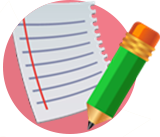Get Business Administration help
Discussions and homework support for your
Business Administration Class
Contemporary Workplace Communication: Short Workplace Messages and Digital Media
Preparing Digital Age E-Mail Messages and Memos
Paper-based messages
- Business letters
- Interoffice memos
Electronic messages
- Instant messaging
- Text messaging
- Podcasts
- Wikis
- Blogs
- Social networking
E-Mail Is Not Going Away
- Preferred channel for most business messages
- Medium costing businesspeople two hours or more each day
- Replacement for paper memos inside organizations
- Substitute for some letters to external audiences
Complaints About E-Mail
- Workplace e-mails are confusing and poorly written.
- Many business school graduates lack writing skills.
- Poor texting and social media habits affect e-mail skills.
- The number of daily e-mails is overwhelming.
- E-mail is blurring the line between work and leisure.
- Messages are permanent and can be used in court.
- Almost a third of bosses have fired workers for violations.
- Face-to-face and phone conversations are richer than e-mail.
When E-Mail Is Appropriate
- Short, informal messages requesting information or responding to inquiries
- Effective for multiple recipients and messages that must be archived
- Cover document when sending longer attachments
Writing Plan for Information E-Mails
Subject Line
- Summarize the main idea in condensed form.
- Avoid meaningless words such as Help, Important, or Meeting
Opening
- Include a greeting such as Hi, Lily; Thanks, Lily; or Greetings, Lily.
- Reveal the main idea immediately but in expanded form.
Body
- Explain and justify the main idea.
- Group similar ideas together.
- Use headings, bulleted lists, and other high-skim techniques when appropriate.
- Avoid wordiness but don’t sacrifice clarity.
Closing
- Conclude with the following information as appropriate:
- Action statement with due dates or deadlines
- Summary of the message
- Closing thought
- Include full contact information in a signature block.
Controlling Your Inbox
- Understand that e-mailing IS business writing.
- Let your coworkers know about your schedule for responding.
- Check your e-mail at set times, twice or three times a day.
- Apply the “two-minute rule.”
Replying Efficiently With Down-Editing
Down-editing means inserting your responses to parts of the incoming message.
- Include only the parts of the incoming message to which you are responding.
- Delete the sender’s message headers, signature, and all unnecessary parts.
- Identify your response with your initials if more people will comment.
- Use a different color for your down-edits.
Best Practices for Better E-Mail: Getting Started
- Don’t write if another channel– such as IM, social media, or a phone call–might work better.
- Send only content you would want published.
- Write compelling subject lines, possibly with names and dates: Jake: Requesting Presentation at Jan. 10 Staff Meeting
Best Practices for Better E-Mail: Replying
- Scan all e-mails, especially those from the same person. Answer within 24 hours or say when you will.
- Change the subject line if the topic changes. Check the threaded messages below yours.
- Practice down-editing; include only the parts from the incoming e-mail to which you are responding.
- Start with the main idea.
- Use headings and lists.
Best Practices for Better E-Mail: Observing Etiquette
- Obtain approval before forwarding.
- Soften the tone by including a friendly opening and closing.
- Resist humor and sarcasm. Both can be misunderstood.
- Avoid writing in all caps, which is like SHOUTING.
Best Practices for Better E-Mail: Closing Effectively
- End with due dates, next steps to be taken, or a friendly remark.
- Edit your text for readability. Proofread for typos or unwanted auto-correction.
- Add your full contact information including social media addresses.
- Double-check before hitting
Top Ten E-Mail Mistakes That Can Derail Your Career
- Expecting an instant response
- Completing the “To” line first (potentially hitting send prematurely)
- Copying and forwarding recklessly
- Thinking no one else will ever see your e-mail
- Forgetting to check for spelling and grammar
- Including inappropriate content (e.g., off-color jokes and other statements you will later regret)
- Not personalizing your message (e.g., skipping the salutation)
- Forgetting a subject line or failing to change it to match the “thread”
- Making address goofs
- Responding when angry
When to Write Memos
- A message is too long for e-mail.
- A permanent record is required.
- Formality is needed.
- Employees may not have e-mail.
Similarities in Both Memos and E-Mails
- Both carry non-sensitive information that may be organized directly with the main idea first
- Both organized with headings, bulleted lists, and enumerated items whenever possible for readability
- Both have guidewords calling for a subject line, dateline, and identification of the sender and receiver
Learning Outcome 2
Explain workplace instant messaging and texting as well as their liabilities and best practices.
Benefits of Instant Messaging and Texting
- Real-time communication with colleagues anywhere in the world is possible.
- Immediate sharing of information allows for quick decisions.
- Enterprise-grade IM applications instantly connect dispersed coworkers.
- Voice calls are substituted with quiet and discreet messaging.
- Messaging avoids phone tag and eliminates the downtime associated with personal phone conversations.
- Messaging allows coworkers to locate each other, even when out of the office.
- Productivity grows because users receive answers quickly and can multitask.
Risks of Instant Messaging and Texting
Some have banned instant and text messagorganizationsing for these reasons:
- Distractions in addition to the telephone, e-mail, and the Web
- Potential for leaks of privileged information when free consumer-grade IM systems are used
- Legal liability from workers’ improper use of mobile devices on the job, for example when texting and driving
- Phishing schemes, viruses, malware, and spim (IM spam)
- Evidence in lawsuits, subject to discovery
- Laws mandating that broker-client messages be retained for three years
- Potentially overwhelming tracking and storing of messaging
- Inappropriate uses such as bullying and sexting
Best Practices for Instant Messaging and Texting
- Follow your organization’s policies.
- Don’t disclose sensitive information.
- Steer clear of harassment and discriminatory content.
- Don’t forward or link to inappropriate photos, videos, and art.
- Never say anything that could damage your reputation or that of your organization.
- Don’t text or IM while driving.
- Separate business contacts from family and friends.
- Avoid unnecessary chitchat.
- If personal messaging is allowed at work, keep it to a minimum.
- Make yourself unavailable when busy.
- Keep your presence status up-to-date.
- Don’t send multiple messages if you don’t hear from coworkers immediately.
- Don’t use confusing jargon, slang, and abbreviations.
- Care about correctness. Proofread!
Text Messaging and Business Etiquette
- Timing
- Introducing
- Addressing
- Expressing
- Responding
Learning Outcome 3
Identify professional applications of podcasts and wikis.
Business Podcasts or Webcasts
- Elaborate to produce and require quality hardware
- Can be played on any number of devices
- Can be streamed on a website or downloaded
- Offer a friendly human face but require no human presence
- Replace costlier teleconferences
- Broadcast repetitive information that does not require interaction
What Is a Wiki?
- Cloud-based tool employing easy-to-use collaborative software to allow multiple users collectively to create, access, and modify documents.
Popular example: Wikipedia
- Crowdsourcing: tapping into the combined knowledge of a group or team to solve problems and complete assignments
Working on the same content jointly while eliminating version confusion
Four Main Business Uses of Wikis
- Keeping remote global team members informed and coordinated
- Creating a database of information for large audiences
- Facilitating feedback before and after meetings
- Providing a project management tool
Learning Outcome 4
Describe how businesses use blogs to connect with internal and external audiences, and list best practices for professional blogging.
Why Businesses Use Blogs
- To reach a far-flung, vast audience fast and inexpensively
- To keep customers, employees, and the public informed
- To invite spontaneous feedback and interact with consumers
- To create virtual communities, build brands, and develop relationships
- To address rumors and combat misinformation
How Businesses Use Blogs
Crowdsourcing: Organizations are soliciting customer ideas and other input.
Example: Crowdsourcing promotions that seek to connect with customers and to generate buzz that might go viral on the Internet.
How Businesses Use Blogs
Viral Marketing: Online messages spread rapidly, much like viruses pass from person to person. Content must resonate with many people who will share it.
Seven Tips for Master Bloggers
- Craft a catchy but concise title.
- Ace the opening paragraph.
- Provide details in the body.
- Consider visuals.
- Include call to action.
- Edit and proofread.
- Respond to posts respectfully.
Learning Outcome 5
Define the advantages and risks of business uses of social media networks.
Adopting the Facebook Model
Creating proprietary networks: Some corporations maintain their own internal networking sites for their employees.
Example: Red Robin’s Yammer, a private networking site
Connecting workers: Dispersed employees and their skills can be matched up.
Example: UPS uses Twitter to manage its team of 17,000 workers.
Crowdsourcing consumers: Companies invite customer input at the product-design stage.
Example: Dell’s IdeaStorm site solicited 26,000 new product ideas and improvements.
Risks of Social Networks for Businesses
- Incurring productivity losses
- Attracting the wrath of huge Internet audiences
- Leaking trade secrets
- Facing embarrassment over inappropriate employee posts
Using Social Networking Sites and Keeping Your Job
Do
- Learn your company’s media policies.
- Separate work and personal data.
- Avoid sending personal e-mail, IM messages, or texts from work.
- Be careful when blogging, tweeting, or posting on social networking sites.
- Keep sensitive information private.
- Stay away from pornography, sexually explicit jokes, or inappropriate screen savers.
Don’t
- Don’t spread rumors, gossip, and negative defamatory comments.
- Don’t download and spread cartoons, video clips, photos, and art.
- Don’t download free software and utilities to company machines.
- Don’t open attachments sent by e-mail.
- Don’t store your music and photos on a company machine (or server).
- Don’t watch streaming videos.
- Don’t share files and avoid file sharing services.

Accounting Homework
Stuck with a homework question? Find quick answer to Accounting homeworks

Ask Accounting Tutors
Need help understanding a concept? Ask our Accounting tutors

Accounting Exams
Get access to our databanks of Discussion questions and Exam questions
How We Safeguard Your Tutor Quality
All tutors are required to have relevant training and expertise in their specific fields before they are hired. Only qualified and experienced tutors can join our team
All tutors must pass our lengthy tests and complete intensive interview and selection process before they are accepted in our team
Prior to assisting our clients, tutors must complete comprehensive trainings and seminars to ensure they can adequately perform their functions
Interested in becoming a tutor with Online Class Ready?
Share your knowledge and make money doing it
1. Be your own boss
2. Work from home
3. Set your own schedule


